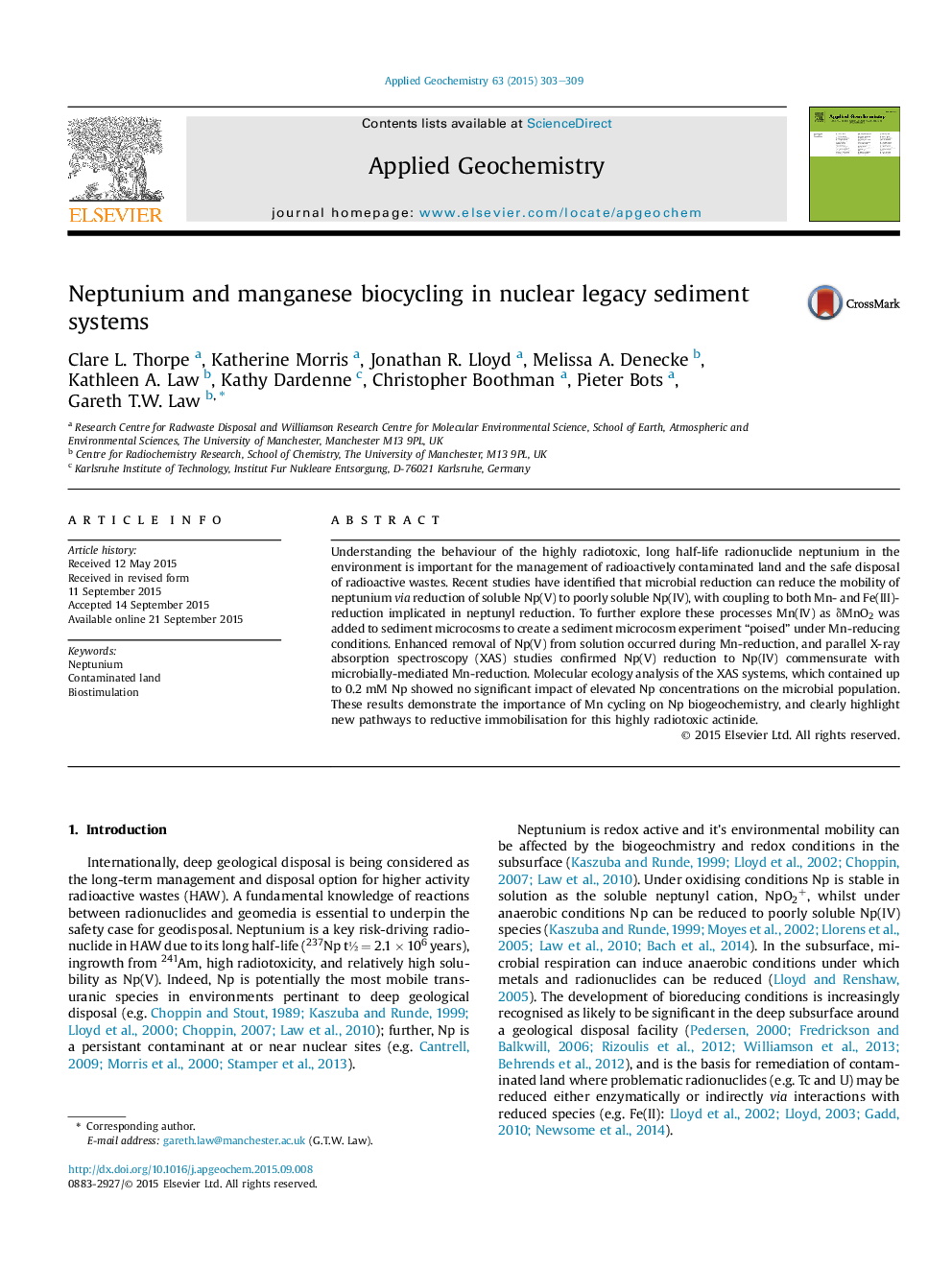| کد مقاله | کد نشریه | سال انتشار | مقاله انگلیسی | نسخه تمام متن |
|---|---|---|---|---|
| 6334961 | 1620228 | 2015 | 7 صفحه PDF | دانلود رایگان |
عنوان انگلیسی مقاله ISI
Neptunium and manganese biocycling in nuclear legacy sediment systems
ترجمه فارسی عنوان
بیوتکنولوژی زیستی نپتون و منگنز در سیستم های رسوب هسته ای
دانلود مقاله + سفارش ترجمه
دانلود مقاله ISI انگلیسی
رایگان برای ایرانیان
کلمات کلیدی
نپتون زمین آلوده، بیهوشی
موضوعات مرتبط
مهندسی و علوم پایه
علوم زمین و سیارات
ژئوشیمی و پترولوژی
چکیده انگلیسی
Understanding the behaviour of the highly radiotoxic, long half-life radionuclide neptunium in the environment is important for the management of radioactively contaminated land and the safe disposal of radioactive wastes. Recent studies have identified that microbial reduction can reduce the mobility of neptunium via reduction of soluble Np(V) to poorly soluble Np(IV), with coupling to both Mn- and Fe(III)- reduction implicated in neptunyl reduction. To further explore these processes Mn(IV) as δMnO2 was added to sediment microcosms to create a sediment microcosm experiment “poised” under Mn-reducing conditions. Enhanced removal of Np(V) from solution occurred during Mn-reduction, and parallel X-ray absorption spectroscopy (XAS) studies confirmed Np(V) reduction to Np(IV) commensurate with microbially-mediated Mn-reduction. Molecular ecology analysis of the XAS systems, which contained up to 0.2 mM Np showed no significant impact of elevated Np concentrations on the microbial population. These results demonstrate the importance of Mn cycling on Np biogeochemistry, and clearly highlight new pathways to reductive immobilisation for this highly radiotoxic actinide.
ناشر
Database: Elsevier - ScienceDirect (ساینس دایرکت)
Journal: Applied Geochemistry - Volume 63, December 2015, Pages 303-309
Journal: Applied Geochemistry - Volume 63, December 2015, Pages 303-309
نویسندگان
Clare L. Thorpe, Katherine Morris, Jonathan R. Lloyd, Melissa A. Denecke, Kathleen A. Law, Kathy Dardenne, Christopher Boothman, Pieter Bots, Gareth T.W. Law,
